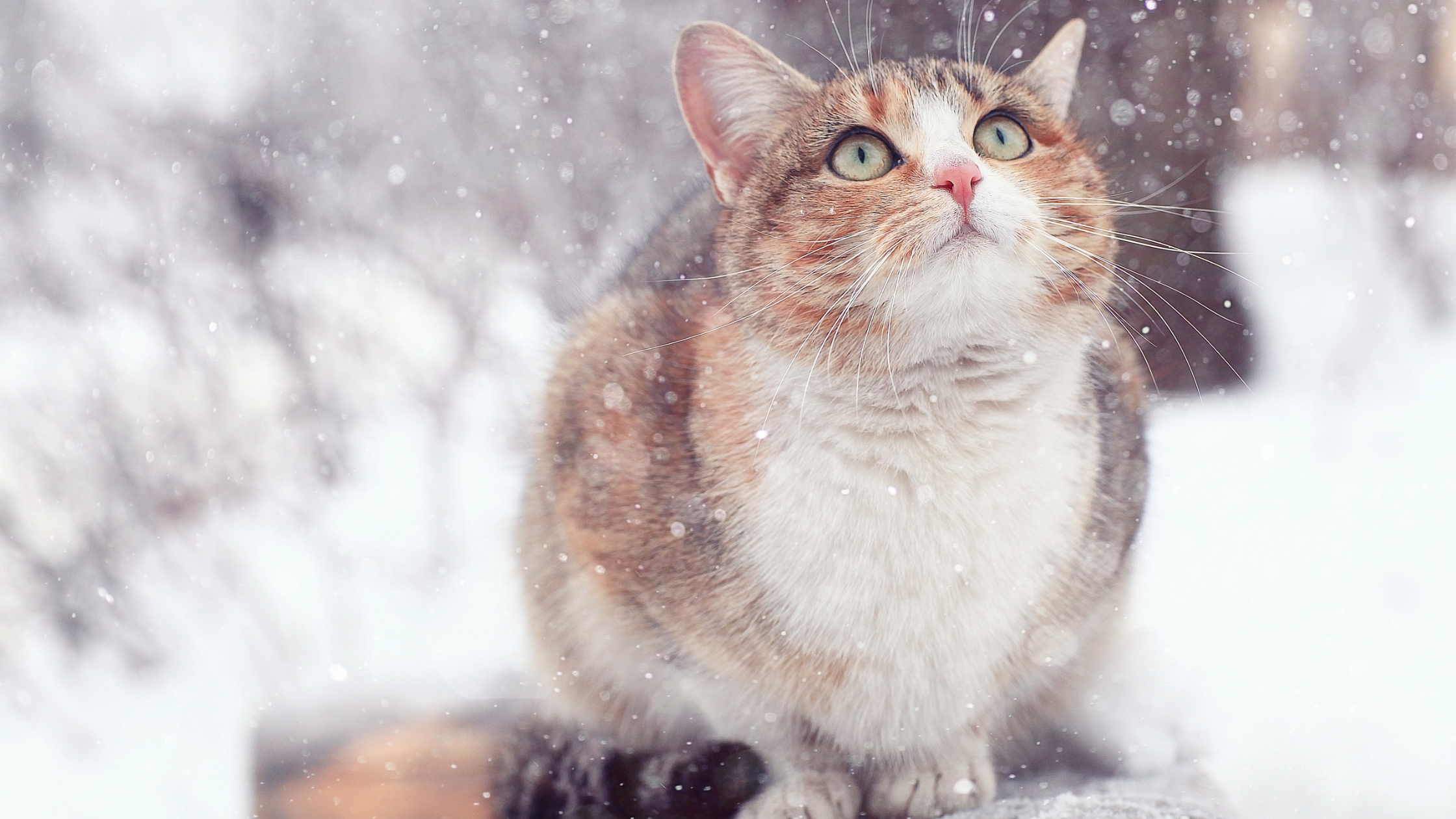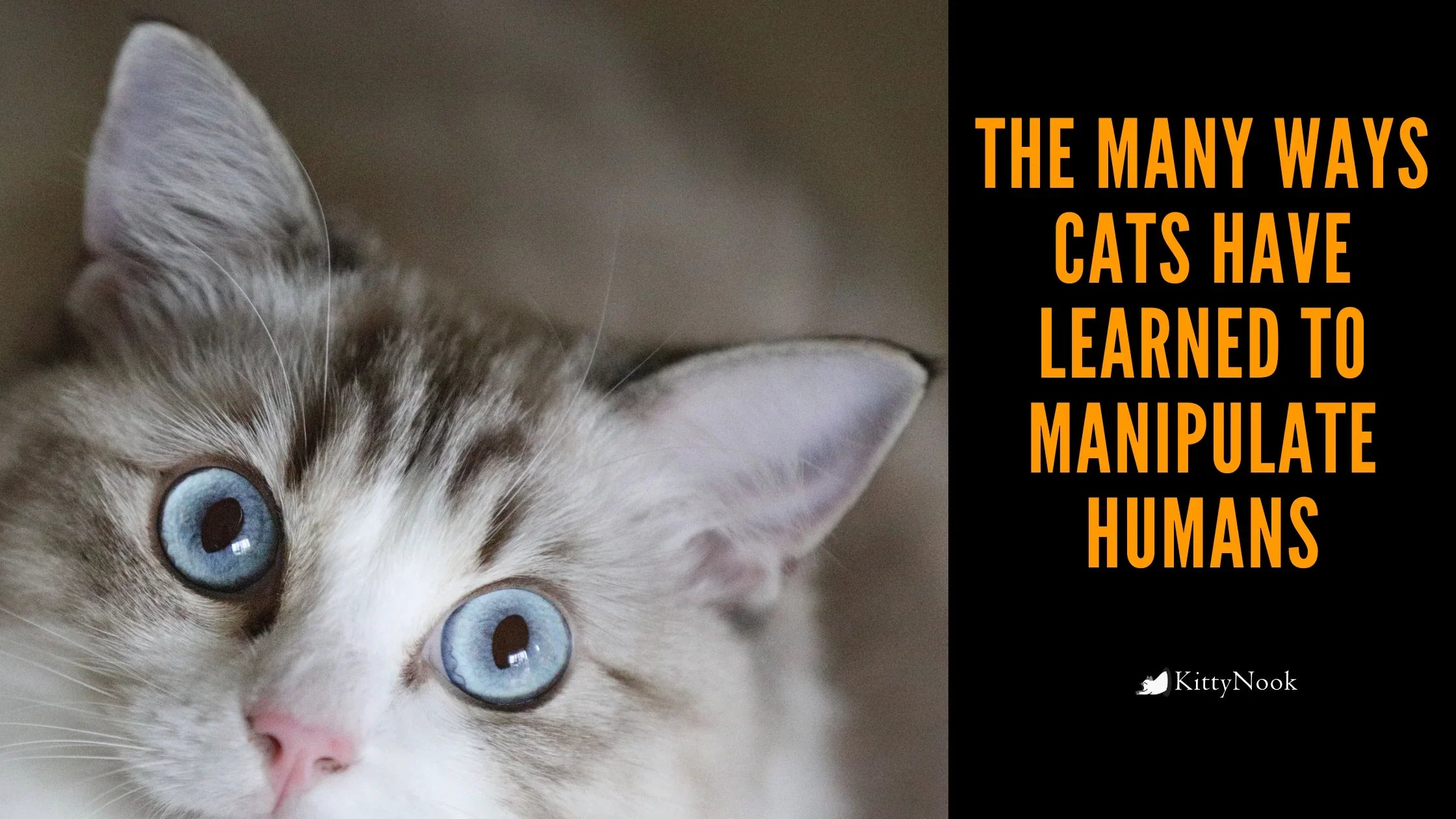How did cats go from strolling hills to purring in our laps?
Owners frequently lament about their cats owning them, and not the other way around. Numerous scientific researches have discovered that cats can indeed manipulate humans in little and subtle ways.
Felines have evolved around humans, permitting them to observe our actions. Cats use these observations to develop habits that can get them the results they want.
These "manipulative behaviors" do not have evil reasons that motivate them. Cats are shown to prefer spending time with their owners. At times, cats can choose human communication over food and toys.
Experts concur that felines domesticated themselves. Unlike dogs that were chosen and bred for specific characteristics, cats came into our lives 4000 years ago for the promise of food. Rodents have long plagued humans, and this brought cats into our lives as well.
Do Cats Manipulate People?

Scientists do not know much about feline cognition or how felines use their minds to navigate the world around them. What they do know is that cats can observe our behavior in a process called 'social referencing.' This is something that children learn and use right into adulthood. It's when you're in an unfamiliar situation, and you use the reaction of the people around you to inform you of certain behaviors. For example, when a kid claims something ridiculous, they will observe how the adults will react. If the adults laugh, then that means it was a joke that was funny.
Social referencing is an intricate process, so pets showing it have high intelligence. As they are clever enough to put our behavior in context, they can train themselves to behave in a manner that triggers those behaviors. This capability to social reference reveals just how well felines have adjusted to humans.
Manipulation Or A Product Of Evolution?

The word 'manipulate' have very negative undertones. So let me start this by clarifying that when it comes to our furry friends, it does not necessarily indicate evil or malevolence. Researchers believe that these manipulative behaviors are simply a way cats engage with human beings. It is deeply ingrained in how felines develop connections with people and us with them.
The term "domesticated cat" might be a misnomer. Felines were not tamed; instead, cats made human negotiations. Seeing that cats were good at searching rats, people decided to keep them. For this reason, some researchers choose the term "semi-domesticated" to show the difference.
Once we consider cats as animals that chose to live alongside human beings, the behaviors of modern felines make more sense. The partnership was mutually advantageous. In time, cats with more manageable characteristics were preferred over more aggressive ones, effectively developing new species that would at some point become the breeds of domestic cats we know today.
The Different Ways Cats Manipulate Humans

All of these qualities, including their beginnings and adaptation, paint us a clearer picture of our feline friends. Over the thousands of years we've spent together, felines have taught themselves how to live with us amiably. And often, these ways include manipulative strategies.
Purrs To Manipulate
In the journal Current Biology, a study uncovered that a special kind of feline vocal communication could be taking advantage of our intrinsic reaction to nurture. Mainly, it's a solicitation purr.
Most purrs have low, droning sounds. Solicitation purrs, however, have a shrill cry sound ingrained within them. These purrs have a more urgent vibe in them, making them difficult to disregard.
What's more, some participants didn't even own cats. Not owning a cat did not make any difference to their assumption of this type of purr. This led the scientists to conclude that whatever this shrill cry is doing to us, it's wired deep within our brains.
It might be that this piercing cry resembles that of a sobbing infant. But how does this work exactly? The said research had linked feline vocalizations, particularly their different meows and purrs, to human infants. This led scientists to believe that this special purr invokes the same impulse in humans when reacting to babies that require to be fed.
This immediate cry-purr worked well on human beings. Cats did not research human children to see how they can include this weeping right into their vocalizations. Researchers believe that cats may have learned which vocalizations worked with humans and which did not over time. Therefore, the technique was passed from one generation to the next, causing cats to simulate infant weeps in their own ways.
Meows To Manipulate
According to science, cats understand how to meow to get what they desire.
One particular study in Journal of Comparative Psychology revealed out that the most urgent meows were much longer and were vocalized at lower frequencies. Pleasant meows were shorter, with power even at high and low frequencies.
Scientists believe that this was caused by 'artificial selection,' a process where cats that use these types of meows were picked over those who did not. To show this, the researchers videotaped the meows of wild cats. Their findings were that the vocalizations were neither pleasant nor appealing to humans.
Of course, domestic felines don't understand the significance of their very own meows. What they do know, nevertheless, is which meows elicit the wanted human behaviors. This just shows how cats are very good at manipulating their owners.
Reciprocate Wanted Actions
Parents understand how to make kids do what they want. Whether through appreciation, rewards, or mild threatening, parents have a whole deck of strategies to encourage their kids to do something.
Science says that this partnership might be similar to a relationship between cats and humans and that cats might have more say in this. In a research study published in the journal Behavioral Processes, researchers determined that cats' and humans' bonds may be akin to humans' bonds with other people.
Amongst their researches was proof of cats following their human's wishes, but if the human fulfilled their wants first. Cats likewise tend to wait for humans to initiate the interaction. And in some cases, they won't even reciprocate whatsoever.
So, the next time you listen to someone describe their cat as their kid, bear in mind that there may perhaps be some truth to that. Don't feel too bad about having your habits changed by your cat.
Cats Are Cute
If you assume felines are cute; scientific research provides proof. According to one study, cats have physical characteristics that are similar to babies. These traits are described as kinderschema or baby schema.
The baby schema consists of a big head, a rounded face, and big eyes. The idea is that these qualities elevate the cuteness of infants, motivating adults to care for them, support them, and give them more attention.
While all of us recognize that cats are cute, the study established that cats elicit these nurturing actions in human beings. This means that we look at human infants similarly to how we look at cats.
It turns out, whether our cats control us on purpose, we did not have much say in the issue anyhow. And, again, cats have proven themselves to be like babies in more ways than one.
Does My Cat Love Me?

Felines have an unfavorable track record for being chilly, unbothered, and sometimes even pitiless. With all the proof of their capacity to manipulate, you might be left asking yourself if felines only see us as a way to obtain food.
A study gave that made cats choose between food, toys, and human communication that this is simply not the case. Despite not being fed for 2.5 hours, fifty percent of the cats still chose to engage with humans.
So while cats are efficient in manipulating people, there is ample evidence to show that your feline likes you more than the food and toys that you provide. While the ways they demonstrate affection aren't as obvious as those of dogs, your cat loves you. This proof of love paints their manipulative actions as cats interacting in the best way they know.




















